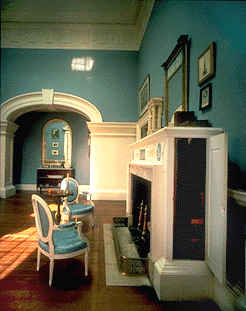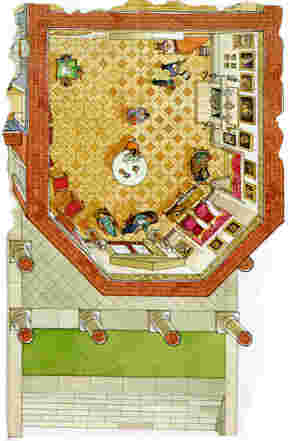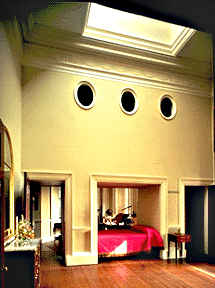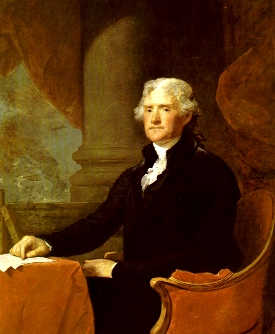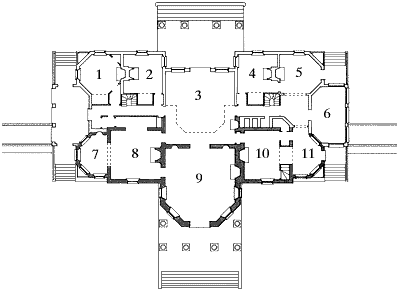
This is the floorplan for the interior of Monticello. I don't have pictures of all the rooms, but I think you'll enjoy the ones that are here.

We'll just walk up this path and go right in the front door. Come on, now. You'll like what you see, and you'll get an idea of what President Kennedy meant by his words above.
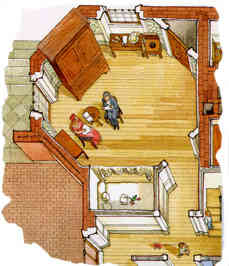
We don't have a photograph of the Octagonal Room (number 1 on the floor plan) but this drawing will suffice. Purpose of Room: Bedroom and possibly a sitting room, used frequently by James and Dolley Madison. Architectural features: Alcove bed with a closet overhead; based on one of Jefferson's favorite architectural shapes, the octagon; one closet is shaped as a triangle to complete the octagon; triple-sash windows, used in many rooms on the first floor, served both as a doorway and a ventilation device; interior shutters are used throughout the first floor for privacy and insulation
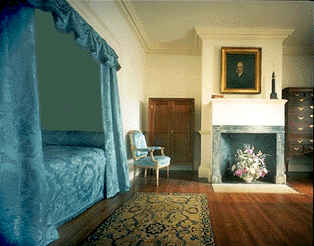
This is the North Square Room (number 2 on the floorplan) This room is not usually shown on tours, except during special winter tours. Purpose of Room: Bedroom, used frequently by the Portuguese scholar Abbé José Correia da Serra.

Here we have the Great Entrance Hall (number 3 on the floorplan) Purpose of Room: Reception area and waiting room for visitors; a museum of American natural history, western civilization, and Native American cultures. Architectural Features: Balcony connects two mezzanine-level wings; green floorcloth; ceiling pattern features eagle and stars pattern.
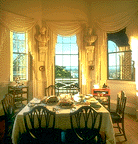
Number 4 on the floorplan is the South Square Room. This was used as a breakfast room.


